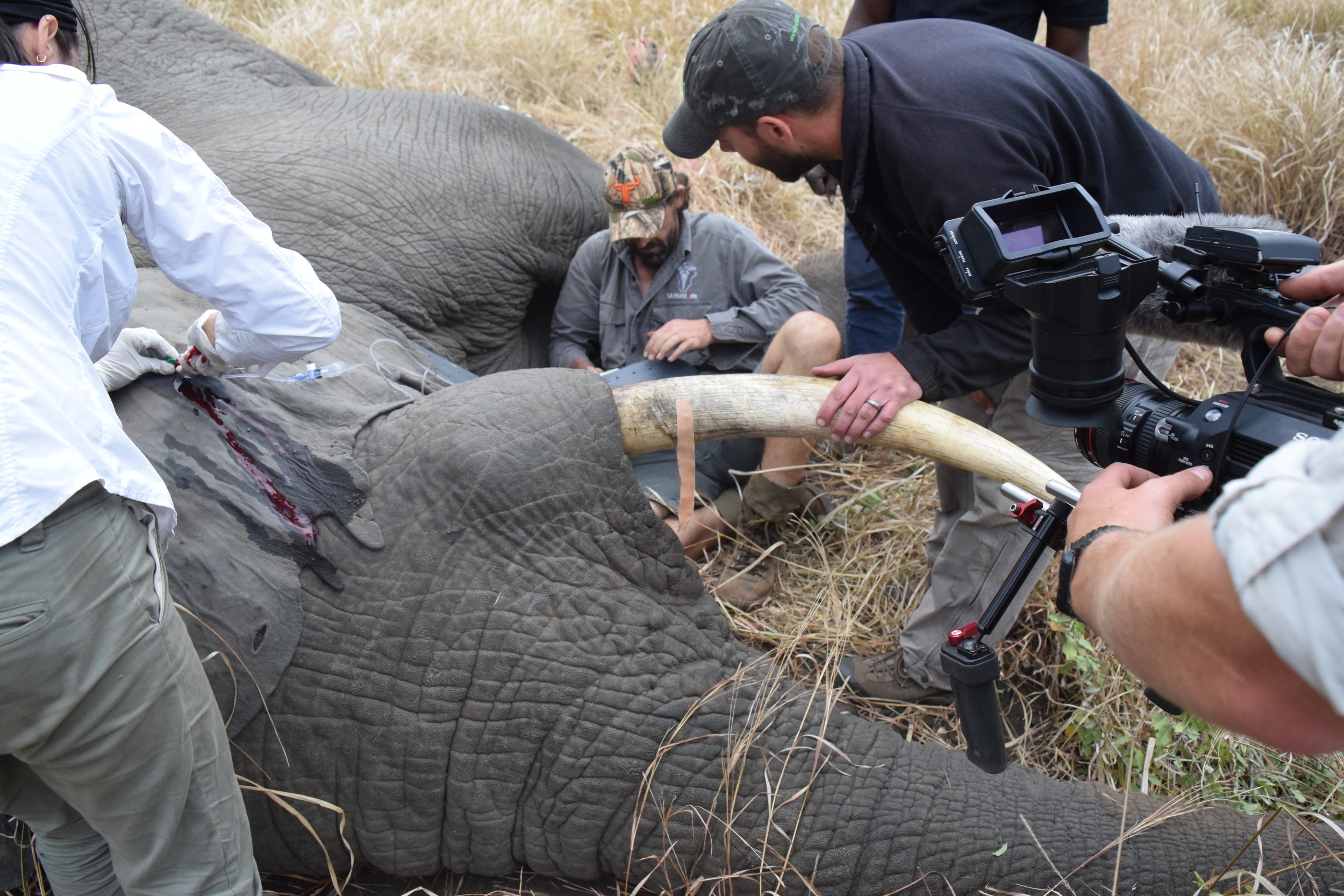Human-Wildlife Interactions
The Causes and Consequences of Tusklessness in Female African Elephants
As the world’s largest land mammal, elephants play keystone roles in savanna ecosystems, many of which revolve around their foraging behaviors. The toppling and crushing of trees and shrubs by elephants provides forage and concealment cover for a diversity of other fauna, and tusks are believed to play an important role in facilitating these behaviors. However, this defining morphological feature of elephants can also be a liability. During the Mozambican Civil War (1977-1992) the elephant population of Gorongosa National Park was reduced from ~2,000 to less than 200 individuals as a result of poaching for ivory and meat. Moreover, although only 2-4% of female African elephants are tuskless throughout most of their range, the incidence of tusklessness among female elephants at Gorongosa that survived the war was estimated to be at least 50%. The Gorongosa elephant population thus provides a unique opportunity to study the causes and consequences of tusklessness in this iconic species. The objectives of our project are to:
Uncover the genetic underpinnings of tusklessness in African elephants and determine whether ivory poaching caused the rapid evolution of tusklessness in the Gorongosa population.
Identify behavioral strategies used by tuskless female elephants to cope with loss of this key anatomical trait.
Evaluate the potential ecosystem-wide consequences of having a high rate of tusklessness in a population of African elephants.
Study Location: Gorongosa National Park, Mozambique.
Timeline: This ongoing project was initiated as a collaborative effort in 2018 among the Long Lab and the Pringle and Campbell-Staton labs at Princeton University.
A tuskless female elephant in Gorongosa National Park, Mozambique.
A tusked female from the same population.
The Elephants of Gorongosa: An Integrated Approach to Conservation and Conflict Mitigation in the Shadow of War
Elephants are the world’s largest extant land mammal, and are an iconic species throughout sub-Saharan Africa. Nevertheless, elephants regularly come into conflict with humans, and management of elephant populations is often fraught with controversy. Gorongosa National Park, in central Mozambique, was once home to more than 2,000 elephants. Most (>90%) of those elephants were killed to feed soldiers during the Mozambican Civil War (1977-1992) and to fund the purchase of arms and ammunition through the sale of ivory. Subsequent recovery of the Park’s elephant population under the auspices of the Gorongosa Restoration Project (GRP) has been an unparalleled conservation success story. However, as this population has recovered, increased crop-raiding by elephants along park boundaries (now heavily cultivated) has threatened to undo restoration efforts, with conflicts between elephants and farmers posing a serious threat to the overall success of the GRP. Human-elephant conflict at Gorongosa is a complex issue that requires urgent attention to avoid further diminishing the tolerance of farmers and simultaneously jeopardizing elephants’ survival. Implementing effective non-lethal strategies for preventing crop damage by these elephants is a complicated task, and the objectives of this project are to:
Collect detailed data on elephant crop damage;
Quantify temporal and spatial patterns of crop raiding by intensive monitoring of individuals with satellite collars;
Evaluate the effectiveness of different strategies for deterring elephants from crop raiding, including bee hives, chili fences, and combinations of the two.
Study Location: Gorongosa National Park, Mozambique.
Timeline: This project was completed in the spring of 2018 by Paola Branco for her MS degree. Read a National Geographic blog post about Paola's work here. Read Paola's thesis here.




